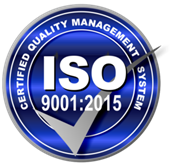Industrial Application of Plated Polymers, and the Increase in Consumer Efficiency
The advent of high-performance polymers, such as PEEK and Ultem, and the combination of electroplated metals has ushered in a new era of technological advancements used for industrial applications. Whether the need is for lightweighting existing metal parts, creating EMI shielding barriers, or gaining an electrically conductive surface on a plastic, SAT has partnered with many large and small firms to expand the uses of the most advanced materials in the world.
In addition to lowering the overall product costs, one of the major benefits seen with plating high-performance polymers is the ability of the material and the plating to survive in extreme environments. Ultem’s high heat resistance makes it perfect for machinery that it is exposed to extreme heat, while Carbon Fiber’s lightweight greatly increases the durability and lifespan of industrial grade products. These properties help increase the viability of polymer-based materials since they offer resistance to extreme environments that would cause machinery to malfunction or break in the past, which ultimately increases the overall production of various products as well as the safety for workers.
Another benefit the industrial landscape now sees is the increase in stability and repairability of machinery. Polymers can increase the longevity of not only machinery but also of the smaller and more intricate components with a machine. This is because rapid prototyping and 3D printing now afford the ability to create dynamic and diverse products. 3D printing allows these smaller parts to be made faster than machined aluminum or steel parts and can often last significantly longer.
3D printing has also helped lower the size of industrial machinery due to its ability to print smaller components. These smaller components decrease the overall size of the machinery, which opens up more factory space for more machinery, thus offering a more efficient workplace. This size decrease also requires less energy to be outputted, which decreases energy consumption and increases profit margins.
Polymers also offer a wide variety of compositional options that allow materials to be specifically catered for specific applications. As previously mentioned, some materials are more heat resistant, while others offer more resistance to acidic or corrosive material. Polymers can be combined to enhance properties, allowing manufacturers to cater to specific needs where a polymer may be exposed to multiple extreme conditions.



